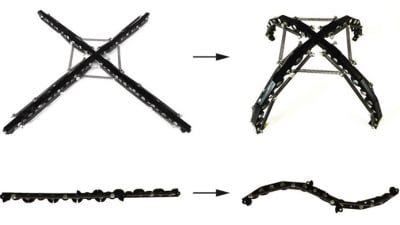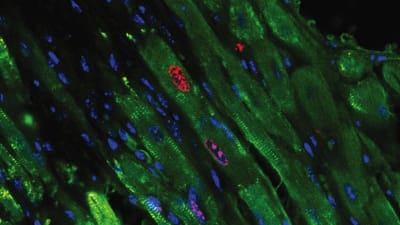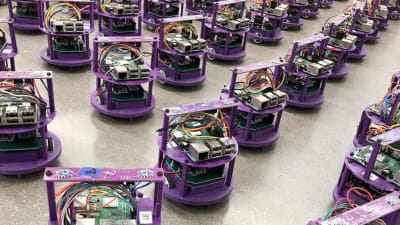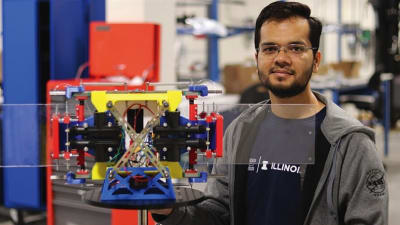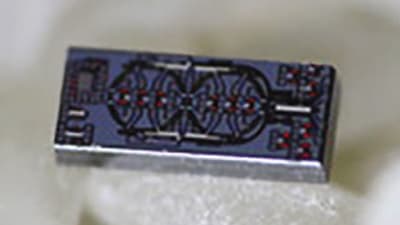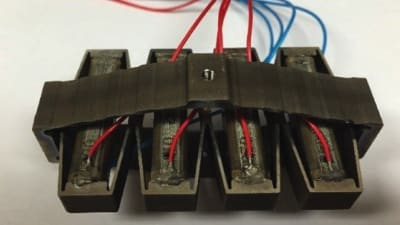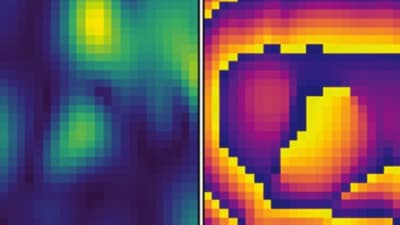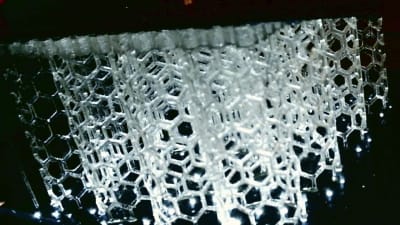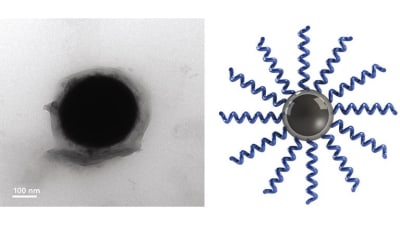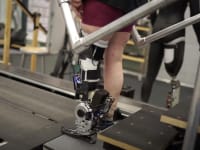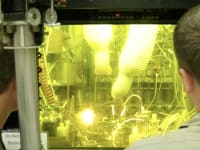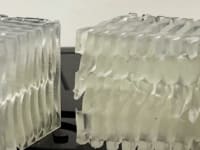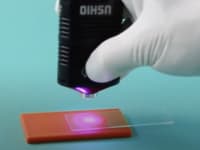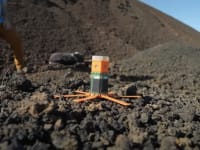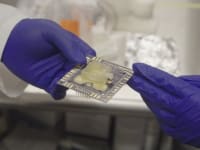61
169
-1
1890
30
Briefs: AR/AI
The method slashes battery testing times — a key barrier to longer-lasting, faster-charging batteries for electric vehicles.
Briefs: Sensors/Data Acquisition
A new way of making polymers adhere to surfaces may enable better biomedical sensors and implants.
Briefs: Mechanical & Fluid Systems
The domino effect is used to design deployable systems that expand quickly with a small push and are stable and locked into place after deployment.
Briefs: Aerospace
This new design could conserve energy used for defrosting airplanes, appliances, and more.
Briefs: Materials
It can be used both in small, portable devices for field inspections and in very large detectors that use arrays of crystals.
Briefs: Manufacturing & Prototyping
These “developable mechanisms” are built into the surfaces of structures.
Briefs: Software
This framework determines regional landslide probability in near real time.
Briefs: Materials
This gel releases short gene sequences into the heart muscle to heal it following a heart attack.
Briefs: Transportation
This technology could help control driverless cars and automated warehouses.
Briefs: Motion Control
Square trusses replace round for enhanced strength and robotics compatibility.
Briefs: Mechanical & Fluid Systems
This technology cancels out the vibrations of a satellite by vibrating the solar panels in the opposite direction.
Briefs: Mechanical & Fluid Systems
Robot-assisted surgery has advanced dramatically over the past decade in almost every surgical sub-specialty. Robot-assisted surgery is usually performed using surgical robot systems that involve...
Briefs: Motion Control
The gyroscope is smaller than a grain of rice — about 500 times smaller than the current state-of-the-art device.
Briefs: Mechanical & Fluid Systems
The domino effect is used to design deployable systems that expand quickly with a small push and are stable and locked into place after deployment.
Briefs: Manufacturing & Prototyping
Manufacturers, medical device companies, and others can use this 3D printing software driven by artificial intelligence (AI).
Briefs: Information Technology
Apps could take up less space on a smartphone and apps could download instantly.
Briefs: Imaging
Special light sources and sensors see around corners or through gauzy filters, enabling reconstruction of the shapes of unseen objects.
Briefs: Energy
Applications include powering portable electronic devices and sensors, and harvesting waste mechanical energy for aircraft, automobile, and other transportation equipment.
Briefs: Manufacturing & Prototyping
Additive Manufacturing Method for Sub-Microscale Three-Dimensional Structures
Applications include MEMS, microlattice fabrication, and other sub-microscale 3D structures with a broad range of materials.
Briefs: Communications
Laser Radio Transmitter
This device transmits data via a semiconductor laser, opening the door to ultra-high-speed WiFi.
Briefs: Sensors/Data Acquisition
The technology could help in elder care with sensors throughout a home.
Briefs: Materials
The coating could make lightweight lithium metal batteries safe and long-lasting for the next generation of electric vehicles.
Briefs: Energy
A wearable energy harvesting device could generate energy from the swing of an arm while walking or jogging.
Briefs: Automotive
Hardware and software tweak microwave patterns to discover the most efficient way to identify objects.
Briefs: Materials
The new body armor can safeguard against even more powerful firearms during combat.
Briefs: Manufacturing & Prototyping
This new 3D printer can print an object the size of an adult human in just a couple of hours.
Briefs: Materials
The coating protects parking decks, bridges, concrete piers, offshore platforms, buildings, and cooling towers.
Briefs: Materials
The adhesive that binds wet surfaces within seconds could be used to heal wounds or implant medical devices.
Briefs: Electronics & Computers
These materials can be used in soft robotics, self-healing electronics, and medical devices.
Top Stories
Blog: Manufacturing & Prototyping
2025 Holiday Gift Guide for Engineers: Tech, Tools, and Gadgets
INSIDER: Research Lab
Scientists Create Superconducting Semiconductor Material
Blog: Software
Quiz: Materials
Blog: Aerospace
Tech Briefs Wrapped 2025: Top 10 Technology Stories
Blog: Manufacturing & Prototyping
Webcasts
 Upcoming Webinars: AR/AI
Upcoming Webinars: AR/AI
The Real Impact of AR and AI in the Industrial Equipment Industry
 Upcoming Webinars: Motion Control
Upcoming Webinars: Motion Control
Next-Generation Linear and Rotary Stages: When Ultra Precision...
 Upcoming Webinars: Energy
Upcoming Webinars: Energy
Hydrogen Engines Are Heating Up for Heavy Duty
 Podcasts: Medical
Podcasts: Medical
How Wearables Are Enhancing Smart Drug Delivery
 Podcasts: Power
Podcasts: Power
SAE Automotive Podcast: Solid-State Batteries




